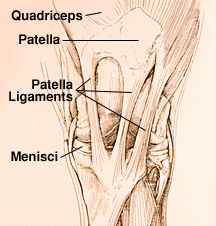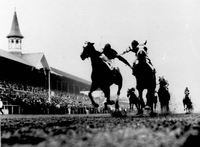The Problem with StiflingA common complaint you will hear from savvy riders is that their horse is stifled. You can sympathize with them if you have had a horse with stifle problems and if not then you likely do not know what they are talking about. | |
|
A horse’s stifle can be pointed out by all horsemen, but no matter how experienced a rider is they don’t know much about the inner working of the stifle. The stifle can be difficult to evaluate due to its size and location. In combination with a lack of understanding regarding its structure and function the topic of the stifle becomes almost as much of a myth among horsemen as medicine. | |
types of injuries associated with it. Confusion is often found when using the term “knee” since a horse has four legs. The stifle is the true “knee” of a horse and is found only on the hind limbs of the horse. The forelimb of the horse is comparable to the human arm so the “knee” of these limbs is structurally similar to our wrist. More properly it should be called the carpas.  Two individual joints make up the stifle and it is determined by the bones that join together there. The femoral-tibal joint is used to communicated between the large bone in the upper leg called the femur and the smaller bone below it called the tibia. Communication from the patella or kneecap is sent to the femur through the femoral-patella joint. The stifle is made up of these two joints. A thin capsule surrounds the entire stifle joint that has a specialized fluid to help with shock absorption and lubrication. |
http://www.horses-and-horse-information.com/articles/0197stifl.shtml







